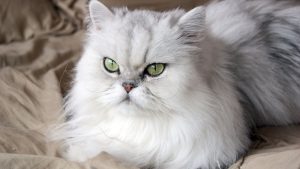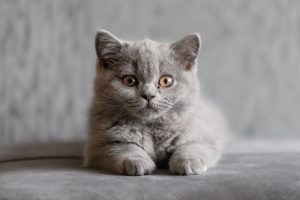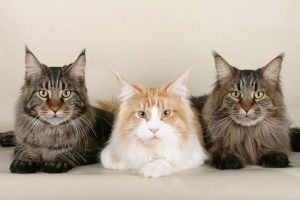Famous for their hairless appearance and wrinkled skin, which some might find grumpy or even fierce, Sphynx cats are still beloved and highly sought after by cat lovers worldwide, commanding a high price. So what makes the Sphynx cat so appealing? Let’s find out in this article from KnowAllAnimals!
1. Origin and History of the Sphynx Cat Breed
The Sphynx cat, one of the most unique cat breeds in the world, originated from a natural genetic mutation in Canada. The development of this hairless breed went through several milestones and the efforts of many breeders. Here are the key points in the history of the Sphynx cat’s development:
- 1966: The first hairless cat, named Prune, was born in Toronto, Canada, to a regular domestic cat. This was the result of a natural genetic mutation. Prune became the foundation for the first breeding efforts to create a stable hairless breed.
- 1975-1978: In Minnesota, USA, two hairless cats named Epidermis and Dermis were discovered and introduced into a breeding program. These cats were crossbred with other breeds, including the Devon Rex, to expand the gene pool and improve the health of the Sphynx cat generation.
- 1983: A breeder named Shirley Smith in Toronto found three hairless kittens and began sending them to Europe to be bred with other cat breeds. From there, European breeders started focusing on developing and breeding Sphynx cats.
- 1998: The Cat Fanciers’ Association (CFA) recognized the Sphynx cat as an official breed, allowing them to participate in shows and exhibitions.
- 2002: The Sphynx cat was officially entered into the championship competition category at CFA shows, helping them gradually become more popular.
- 2005: TICA (The International Cat Association) recognized the Sphynx cat, further elevating the status and popularity of this breed globally.
Through each stage of their history, Sphynx cats have solidified their place in the hearts of cat lovers and have become one of the most unique and beloved cat breeds in the world.
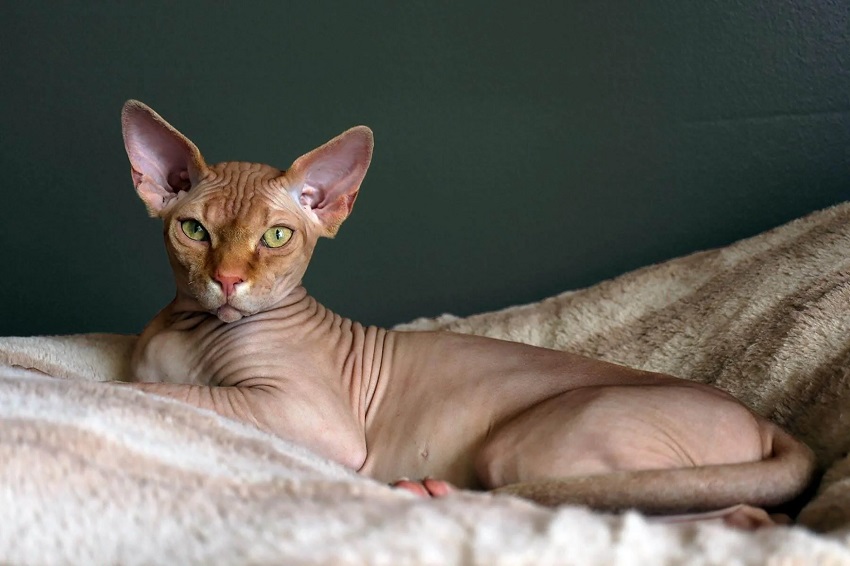
2. Physical Characteristics of the Sphynx Cat
The Sphynx cat has a striking appearance, identifiable by its wrinkled, hairless skin. These cats are medium-sized, with a thick, muscular build, an inverted triangular head, large eyes, and high cheekbones. Their look is reminiscent of the sphinx statues in ancient Egypt, which inspired the breed’s name. They also draw attention with their large, bat-like ears and a tail shaped like a whip.
Although they may appear hairless at first glance, Sphynx cats actually have a fine, downy layer of fuzz covering their entire body. The color of a Sphynx depends on their skin pigmentation, and they can have a single color or display stripes and patterns on their body.
- General Appearance of an Adult Sphynx Cat:
- Height: 20–25 cm (8–10 inches)
- Length: 30–40 cm (12–16 inches)
- Weight: ~5 kg (11 lbs)
- Colors: White, black, blue-cream, brown, cameo, silver, gold, etc. The rarer the color, the more valuable the Sphynx cat.
- Eye Colors: Blue, yellow, orange, red, copper, and green. Some cats may have odd-colored eyes.
Popular Sphynx Cat Colors:
- Sphynx cats have a wide variety of coat colors, including black, blue, red, cream, silver, gold, cameo, brown, and blue-cream. There are also many other unique and rare colors. Because of this, the breed is very expensive, and the rarer the coat color, the higher the price.

3. Sphynx Cat Temperament and Behavior
Sphynx cats have an extremely friendly and affectionate personality. They are known for being very attached to their owners and always wanting human company. Many owners describe a Sphynx’s temperament as being more “dog-like” than cat-like—they love to follow their owners around and frequently show affection by curling up next to them, jumping on their shoulders, or sitting on their laps.
In addition to their friendly nature, Sphynx cats are also remarkably intelligent and love to play. They enjoy exploring their surroundings and can even find toys to entertain themselves when no one is around to play with them. When living with children and other pets, Sphynx cats are typically very sociable and easygoing, making them an ideal family pet.
However, Sphynx cats need a lot of attention and can become bored if left alone for too long. If you are someone who is often away from home, getting another cat or pet would help your Sphynx have a companion.
4. Sphynx Cat Care and Hygiene
Here are some tips for raising and caring for a Sphynx cat:
4.1. Skin Care and Hygiene
Because they lack a coat to absorb natural oils, Sphynx cats are prone to oil buildup on their skin. This can cause skin problems if they aren’t cleaned regularly. To keep your cat’s skin clean, you should bathe them once a week using a gentle, cat-specific shampoo. After bathing, you need to dry your cat’s skin thoroughly to prevent prolonged dampness.
A Sphynx cat’s ears are also prone to accumulating dirt and wax because they lack protective fur. Therefore, you should clean their ears every week with a cotton ball and a cat-specific ear cleaning solution. Be careful not to use cotton swabs, as they can cause internal damage.
4.2. Dental and Claw Care
A Sphynx cat’s teeth and gums need special attention because they are susceptible to gingivitis and other dental diseases. You should brush your cat’s teeth regularly using a toothbrush and toothpaste designed for cats. Additionally, regular nail trimming helps prevent them from having difficulty moving and from scratching their skin.
4.3. Protecting Skin from the Environment
Sphynx cats are prone to sunburn because they lack a protective layer of fur. So, when your cat is outdoors, you need to make sure they avoid direct sunlight for too long. In the winter, because they lose body heat easily, you can dress your cat in a sweater to help keep them warm.
4.4. Sphynx Cat Diet
Sphynx cats have a high metabolism and a sensitive digestive system, so they need a balanced and nutrient-rich diet. An ideal diet for a Sphynx cat includes food that is high in protein, low in carbohydrates, and provides all the necessary vitamins and minerals. You can feed your cat dry food, wet food, or a raw food diet, depending on your cat’s preference and your convenience.
You should divide their meals into smaller portions throughout the day to help them digest better and maintain their energy. Make sure your cat always has access to clean water, as water is very important for aiding digestion and maintaining their health.
Sphynx Cat Nutritional Schedule by Age:
- The First 3 Months: During this time, Sphynx kittens are being weaned, and their digestive systems are still weak. You need to feed them several meals a day (4-5 meals). You should not feed them greasy or fishy foods. Give them rice mixed with minced meat, minced liver, or fish with the bones removed to prevent diarrhea.
- 3-6 Months: During this stage, your cat’s food should be supplemented with kibble, chicken, and green vegetables to provide more protein and calcium for their body to grow stronger. You should feed them 3 meals a day.
- Over 6 Months: At this stage, your Sphynx cat can follow an adult diet. You should reduce their carbohydrate and protein intake and feed them 2 meals a day to prevent obesity. Be sure not to give your cat greasy, spicy, or chocolate-based foods, as these are harmful to a cat’s digestive system.
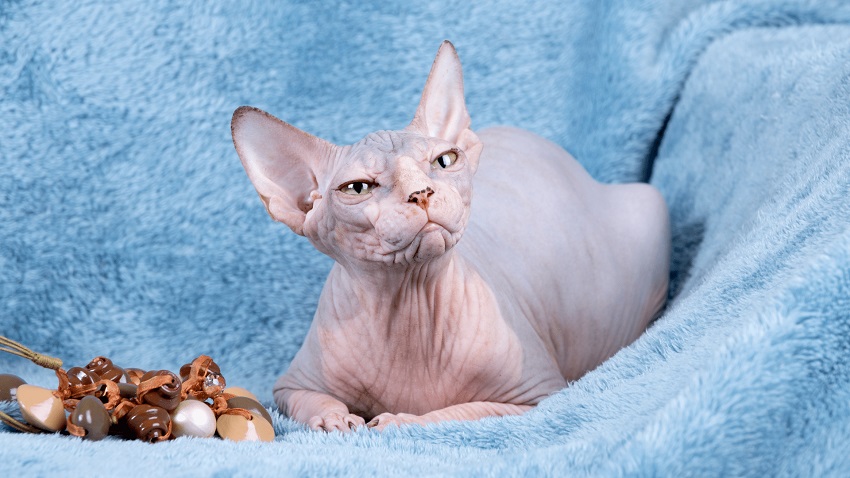
4.5. Common Health Issues in Sphynx Cats
Although they are generally healthy, Sphynx cats are at risk for certain health conditions:
- Hypertrophic Cardiomyopathy (HCM): This is a common heart disease, especially in Sphynx cats. The disease causes the heart muscle to thicken and can affect its ability to pump blood. Regular cardiac ultrasounds are necessary for early detection and treatment.
- Urticaria Pigmentosa: This is a skin condition specific to Sphynx cats that often causes red, itchy spots. You need to clean their skin carefully to prevent inflammation.
- Dental Problems: Sphynx cats are prone to dental diseases because they lack the protective fur and don’t have good oral hygiene habits. Regular tooth brushing and check-ups are necessary to maintain their dental health.
5. How Much Does a Sphynx Cat Cost?
The price of a Sphynx cat can vary depending on its origin and quality.
- Locally bred Sphynx cats are often from domestic breeders, which means their health may not always be guaranteed. Prices for these cats typically range from $305 to $450.
- Imported Sphynx cats are much more expensive, with prices ranging from $950 to $1,520, depending on their purebred status and official paperwork. There are few catteries that sell this breed in Vietnam, so you may need to look for them in cat lover forums and groups to find reputable sellers and prices.
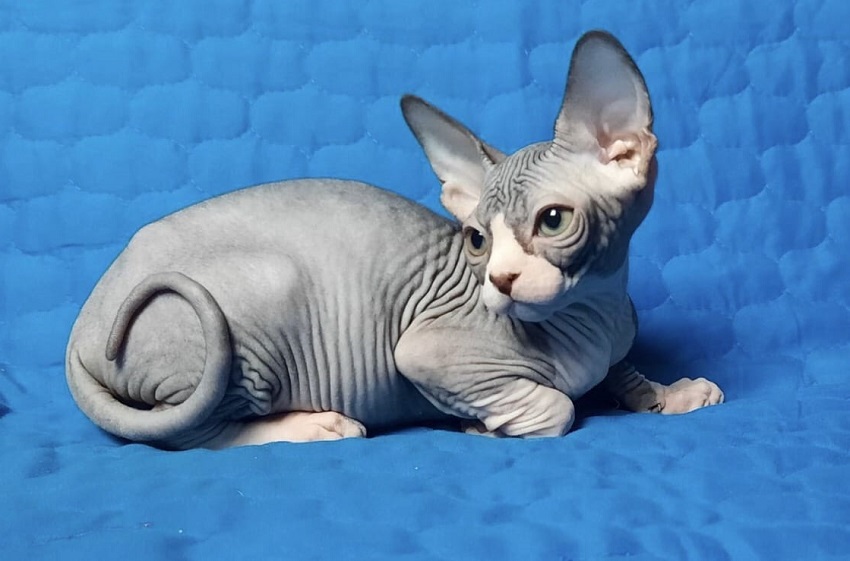
6. Can Someone with Cat Allergies Own a Sphynx Cat?
Many people mistakenly believe that since Sphynx cats don’t have fur, they won’t cause allergies. However, contrary to popular belief, cat allergies are caused by a protein found in a cat’s saliva and the oil secreted by its skin.
Normally, this oily secretion sticks to a cat’s fur and disperses into the environment, which is what triggers allergic symptoms in people. Sphynx cats may cause less irritation because they don’t have fur to spread these allergens. Nevertheless, people with severe cat allergies may still be affected through direct contact with a Sphynx cat.
Therefore, if you have cat allergies, you should consider very carefully and consult with your doctor before deciding to bring a Sphynx cat into your home.
7. FAQs
1. Do Sphynx cats need baths?
Yes, because they don’t have fur to absorb natural oils, Sphynx cats need regular baths (usually once a week) to keep their skin clean and healthy.
2. Are Sphynx cats hypoallergenic?
Not entirely. While they have no fur, Sphynx cats still produce the same allergenic proteins as other cats, so they may still trigger allergies in sensitive individuals.
3. Are Sphynx cats friendly and affectionate?
Absolutely. Sphynx cats are known for being extremely affectionate, social, and playful. They love attention and enjoy cuddling with their humans.
The Sphynx cat is a unique breed, not just for its appearance but also for its friendly, playful, and loyal personality. While they require special care, in return, you’ll have an engaging and loving companion who is ready to give all their affection to you. If you’re looking for a hairless cat that is well-suited for a modern living space and can bring you joy, the Sphynx cat is definitely a choice worth considering.
References: https://en.wikipedia.org/wiki/Sphynx_cat

